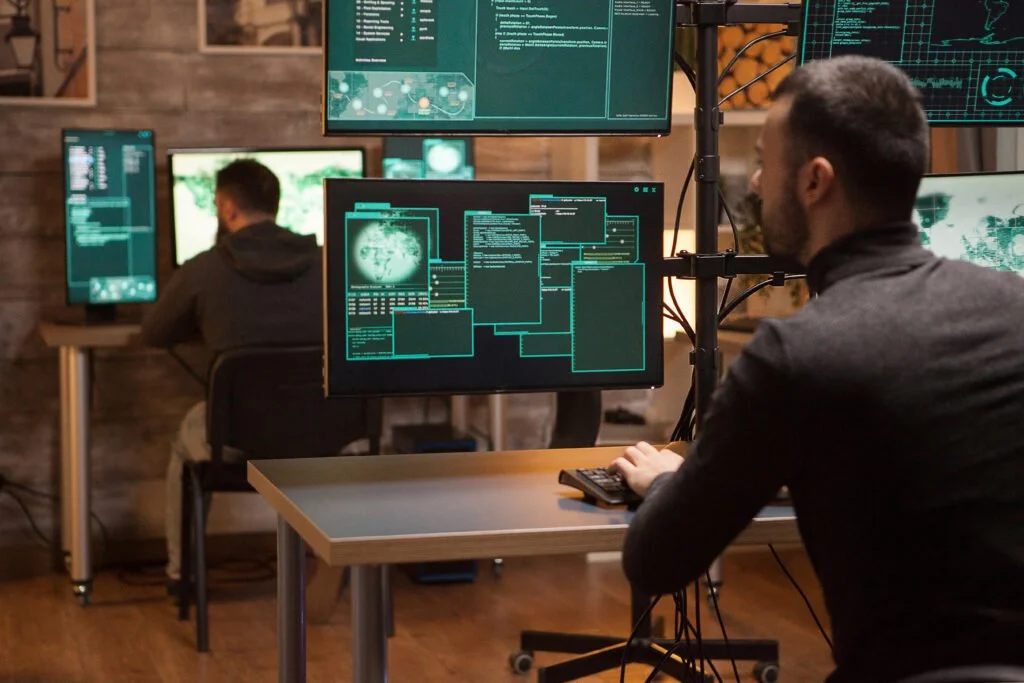
The Role of LiFi in Command and Control Centers with Internet for Military Connectivity
The Role of LiFi in Command and Control Centers with Internet for Military Connectivity

The Role of LiFi in Command and Control Centers with Internet for Military Connectivity
Introduction
In the contemporary landscape of military operations, where rapid decision-making and secure communication are often critical, the role of command and control centers is utterly integral. These nerve centers serve as hubs for processing vast amounts of data, coordinating troops, and orchestrating tactical maneuvers, and therefore need a secure internet connection in order to facilitate these communications. In this article, we'll draw on insights from research in military operations in order to explore how Light Fidelity (LiFi) technology is revolutionizing military wifi in command and control centers, enhancing situational awareness, wireless network security, and operational effectiveness.
Challenges for Military Internet Connectivity
Military operations are ever present in diverse and demanding environments, from urban landscapes to remote battlefields and maritime territory. This can be challenging for a secure wireless connection, as the need for communication systems that can operate effectively in these challenging environments is paramount. Additionally, traditional radio frequency-based networks may encounter limitations, and insight a great deal of electromagnetic interference.
LiFi communication offers inherent resilience to environmental challenges, as demonstrated in a study conducted by the U.S. Army Research Laboratory. The study found that Li-Fi systems can maintain reliable connectivity in underground bunkers, submarines, and other environments where radio signals struggle to penetrate. Furthermore, Li-Fi can be deployed in conjunction with existing infrastructure or portable setups, enabling rapid deployment in temporary or mobile command posts.
Understanding LiFi Technology
LiFi internet operates on the principle of using light to transmit data. Unlike traditional WiFi, which uses radio frequencies, LiFi utilizes the spectrum of visible light to send and receive data. This is achieved through LED light bulbs that modulate light intensity at speeds imperceptible to the human eye. Light signals are then received by photodetectors and converted back into data, enabling high-speed wireless communication.
Applications of LiFi Communication in Command and Control Centers
State-of-the-Art Data Security:One of the primary advantages of LiFi technology is its commitment to the security of a network. Imagine, since light cannot penetrate through walls like radio waves, LiFi signals remain confined within a specific space. This characteristic, as well as advanced encryption methods, makes it extremely difficult for unsanctioned interception of sensitive data by outside parties.
Low Latency Transmissions:In military command and control operations, every second counts. LiFi communication offers exceptionally low latency to military internet, ensuring that critical data reaches its destination with minimal delay. This near-instantaneous transmission is crucial for real-time decision-making, allowing personnel to respond swiftly to changing situations.
Electromagnetic Interference Immunity:Traditional WiFi networks are susceptible tocybersecurity breachesand electromagnetic interference from various sources, including electronic devices and other wireless signals. LiFi, on the other hand, operates in the optical light spectrum, making it immune to such interference.
The Choice in Classified Environments:In highly secure environments such asmilitary defense command centersor government agencies, the use of radio frequency-based communication technologies may be restricted due to potential security risks. The role of LiFi security is to provide a safe alternative that operates on light waves that do not propagate beyond the designated area.
Benefits of LiFifor Military Internet Connectivity
Research conducted by military organizations highlights the importance of rapid data transmission in order to achieve mission success, and delays in communication can significantly impact decision-making and operational outcomes on the battlefield. LiFi as an option for military wifi offers a solution to this challenge by enabling rapid data transmission rates, measured in gigabits per second.
For example, a study published in the Journal of Military Communications demonstrated that LiFi systems can achieve data transfer speeds up to 100 times faster than traditional WiFi networks.Oledcommunderstands that this level of throughput enables commanders to access real-time intelligence, surveillance data, and tactical directives instantaneously, empowering them to make timely and informed decisions in dynamic, high pressure environments.
Real-world Examples of Internet for Military
For secure communication and tactical deployments, LiFi systems integrated for military wifi into portable devices or deployed as standalone units enables secure, high-speed communication between troops or vehicles in remote or hostile environments. These applications could enhance situational awareness and coordination during military operations.
LiFi's resistance to electromagnetic interference and itscustomizable structuremakes it a solution particularly suitable for communication systems in aircraft and naval vessels. Radio frequency-based communication technologies can be susceptible to interference from onboard electronics or external sources, potentially compromising communication reliability. LiFi communication systems installed on aircraft or naval platforms defy boundaries for connection, and provide local and secure data transmission capabilities.
Another prime example of a real world application is in military training and simulation scenarios. Wireless network security in basecamps can enable training and simulation that incorporates LiFi-enabled devices. Military personnel are then able to simulate real-world communication environments while ensuring data security and reliability.
Integration Challenges and Solutions
As military operations continue to evolve, the integration of emerging technologies such as artificial intelligence (AI), unmanned systems, and augmented reality (AR) becomes increasingly important. Research conducted by military organizations highlights the potential of LiFi communication and technology to seamlessly integrate with these emerging technologies due to its commitment to interoperability within already existing WiFi structures and lighting systems.
Future Prospects and Innovations
A study conducted by the NATO Communications and Information Agency demonstrated the compatibility of LiFi technology with unmanned aerial vehicles (UAVs) and ground robots. It found that LiFi Internet-enabled devices in motion can communicate directly with command and control centers, facilitating real-time data sharing, remote control, and enhanced situational awareness. Additionally, LiFi technology can support the deployment of AI algorithms for predictive analytics and decision support, further enhancing the breadth and depth of its influence where quick communication is needed.
Conclusion
Light Fidelity (LiFi) communication and technology holds tremendous promise for enhancing military command and control centers, drawing from insights gleaned from research in military operations. By enabling almost instantaneous data transmission, enhancing wireless network security, ensuring resilience in challenging environments, eradicating electromagnetic interference and integrating with emerging technologies, LiFi technology empowers commanders with the critical tools they need for success on the modern, increasingly technological battlefield. As military organizations continue to invest in advanced communication technologies, LiFi stands poised to play a pivotal role in providing military wifi for military operations.
Recent articles

Categories
See some more...




